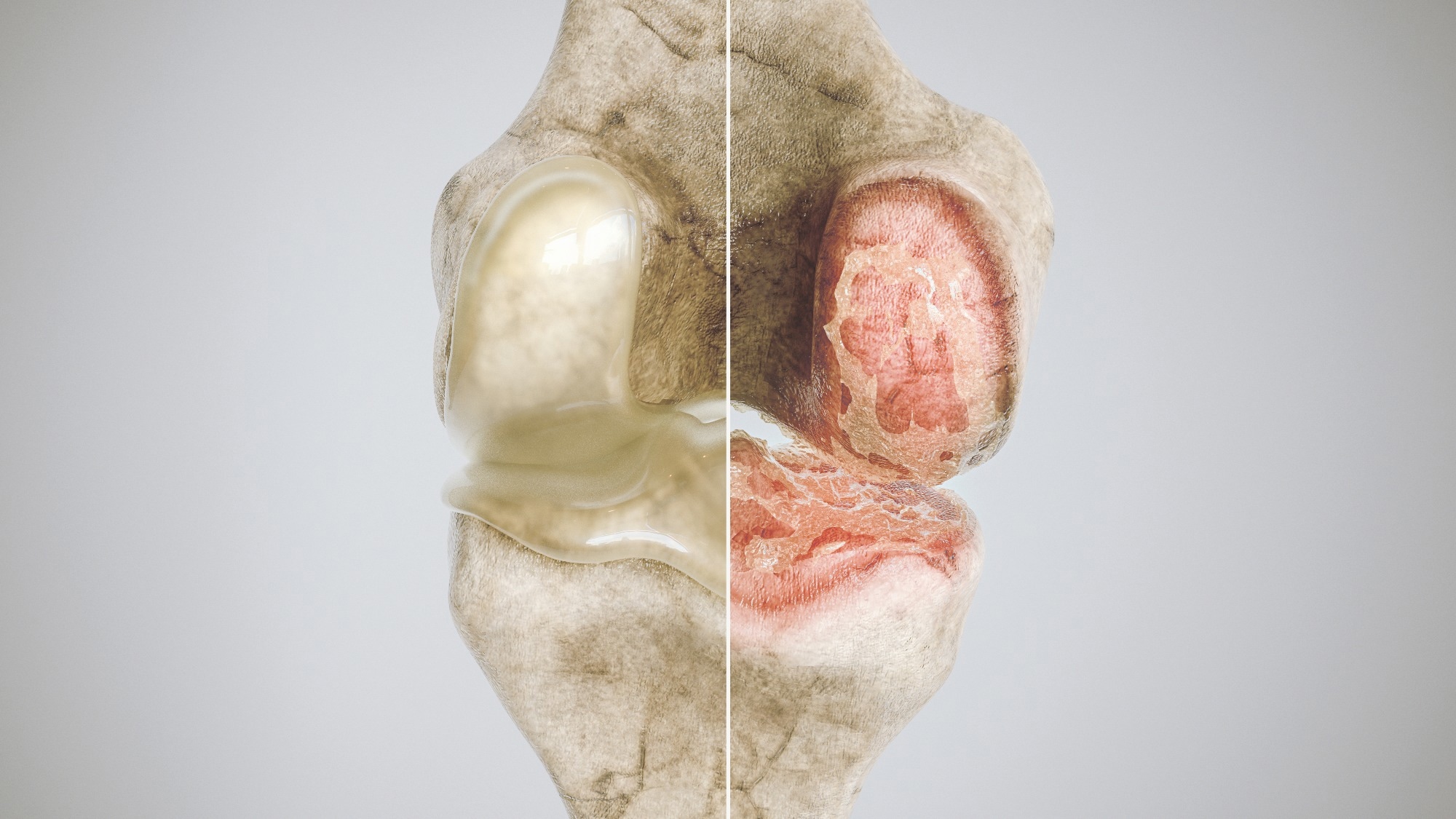In a recent study published in JAMA Network Open, researchers in the United States (US) determined the risk of osteoarthritis (OA) and joint replacement among adults with type 2 diabetes (T2D) following metformin or sulfonylurea treatment.
 Study: Development of Osteoarthritis in Adults With Type 2 Diabetes Treated With Metformin vs a Sulfonylurea. Image Credit: Crevis / Shutterstock
Study: Development of Osteoarthritis in Adults With Type 2 Diabetes Treated With Metformin vs a Sulfonylurea. Image Credit: Crevis / Shutterstock
Background
OA, the most commonly observed type of arthritis, is associated with considerable morbidity. Existing therapeutic options for osteoarthritis are aimed at managing symptoms only, highlighting the need for disease-modifying agents to retard or reverse OA progression.
Metformin, a biguanide-derived substance, is commonly prescribed for T2D, considered safe, and reported to possess anti-inflammatory, anti-aging, anti-cancer, immunomodulatory, analgesic, and weight-lowering properties.
Studies have reported on the protection conferred by metformin use against OA via activating AMP-activated protein kinase signaling, reducing matrix metalloproteinase-13 (MMP-13) levels, enhanced autophagy, decreased apoptosis of chondrocytes, and enhancing mesenchymal stem cells' anti-inflammatory and chondroprotective properties.
However, robust epidemiological-study data are limited. Most studies evaluate the protective effects of metformin against pre-existing OA progression, not considering the simultaneous use of antidiabetic medications and having time-associated bias.
About the study
The present study evaluated the association between metformin use and OA incidence.
Optum's Clinformatics® Data Mart (CDM) data were obtained from 1 December 2003 to 31 December 2019 and analyzed from April to December 2021. The national study comprised T2D patients aged ≥40.0 years with ≥1.0 years of being continuously registered with the database before their diagnosis of diabetes, using the international classification of diseases ninth revision (ICD-9) codes or ICD-10 codes.
The team excluded individuals with type 1 diabetes (T1D), those with initial diabetes diagnosis occurring post-metformin or sulfonylurea treatment initiation, and those consuming metformin and sulfonylurea drugs simultaneously.
In addition, individuals with a previous history of inflammatory-type arthritis and osteoarthritis (based on the current procedural terminology (CPT) codes) and those who underwent joint replacements were excluded from the analysis.
The team performed 1:1 time-based propensity score matching (PCM), considering gender, age, Charlson comorbidity scores, treatment duration, and race to create a cohort of new users. The study exposures were metformin or sulfonylurea treatment for ≥90.0 days. The primary outcomes were the new-onset OA and the replacement of knee or hip joints. For the study groups, index dates were the initial fill dates for the medication of interest.
Follow-up assessments were performed from 90.0 days following index dates till the participants were: diagnosed with osteoarthritis, underwent hip or knee joint arthroplasty, terminated metformin or sulfonylurea treatment, used antidiabetic medications (apart from sulfonylurea drugs or metformin), were removed from the CDM claims database, or till termination of follow-up by 31 December 2019.
Cox proportional hazards-type modeling was performed, and the adjusted hazard ratios (aHR) were calculated, adjusting for gender, age, ethnicity, race, education, location, Charlson comorbidity scores, and the frequency of outpatient visits.
In the sensitivity analysis, persons who ever received metformin treatment were compared to those who only received sulfonylurea treatment to longitudinally assess the study outcomes (even post-termination of study intervention). Incident rates (IRs) were documented as the number of events for every 1,000 individual years.
Results
The metformin-treated and control groups comprised 20,937 T2D patients, with a mean participant age of 62 years, among whom 58% (n=24,379) were male. Metformin treatment reduced new-onset OA risk by 24.0%, compared to sulfonylurea treatment (aHR 0.8). However, no statistically significant differences were observed in joint replacement risks (aHR 0.8).
Sensitivity analysis yielded similar results, indicating that the incident OA risk continued to be lower among metformin-treated individuals than among those treated with sulfonylurea medications (aHR 0.8), and joint replacement risks continued to show non-significant differences (aHR 1.0).
The incident rate of osteoarthritis for metformin-treated and sulfonylurea-treated individuals for every 1000 individual years were 28 and 40, respectively.
The corresponding incident rates for joint replacement for every 1,000 individual years were 1.5 and 2.1, respectively. In the sensitivity analysis, the incident rates of osteoarthritis for metformin-treated and sulfonylurea-treated individuals were 25 events and 31 events for every 1,000 individual years, respectively.
The team found a 23.0% decrease in risk of OA development following metformin treatment, compared to sulfonylurea treatment (aHR 0.8). Compared to sulfonylurea treatment, the observed therapeutic benefit conferred by metformin treatment was lower among sulfonylurea-treated individuals with previous metformin exposure compared with sulfonylurea-treated individuals without previous metformin exposure. The finding could be since sulfonylurea-treated individuals with previous metformin exposure derived long-term protection related to metformin exposure.
Conclusions
Overall, the study findings showed that in the cohort of T2D patients, metformin use significantly decreased OA development risks compared to sulfonylurea medications. The findings underpin preclinical (in macaques, mice, and rats) data and observational study (in humans) data on the protective effects of metformin against new-onset OA.
However, the study findings should be cautiously interpreted due to missing body mass index (BMI) data and the probability that metformin-induced weight loss could have led to the study findings. Therefore, further research on metformin therapy for OA prevention or treatment must be conducted.